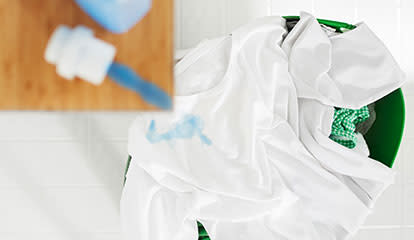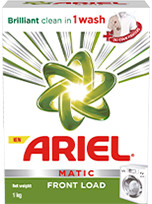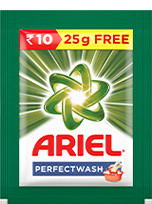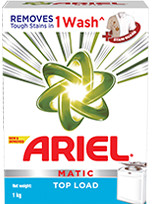Picking the perfect detergent for your regular clothes is already a big enough challenge, but you have to be even more careful when it comes to choosing the right detergent for baby clothes. Although babies are small, the laundry they’ll load you with every day is sizable, so you’re going to need a reliable, powerful, and most importantly, gentle laundry detergent for the job. That’s where Ariel comes in. Read on and find out more how to choose detergent and how to wash baby clothes for the best result.
Choosing a baby clothes detergent
New parents might feel the need to use a detergent designed especially for babies and those with a sensitive skin. However, if your baby doesn’t have any allergies or sensitive skin, it’s better to go with regular detergents instead of a laundry detergent for sensitive skin, since they have the added benefit of enzymes. These active ingredients help break down even the toughest protein stains usually found on babies’ clothes, like chocolate, milk or baby food, making your job as a parent that much easier.
A liquid detergent such as Ariel Matic Liquid typically rinses out more easily, especially if you have hard water. Ariel Washing Liquid also has the added benefit of dissolving quickly even at low temperatures, and removing tough stains in just one wash. With a powerful liquid detergent like Ariel, you’re not only protecting the brightness of your babies’ clothes, but you’re also keeping your laundry costs down, as Ariel Matic Liquid Detergent washes as much as 1 kg of powder*.
In case you’re worried your baby’s skin might be too sensitive for a regular detergent, do a test wash with one piece of your baby’s clothing. After your baby first wears the washed garment, check their skin for rashes or other signs of irritation. If your baby shows no such signs, then you can safely wash all their other garments with your regular detergent. If, however, their skin seems irritated, you should try a detergent free of dyes and perfumes. If you still see red spots on their skin, try rinsing the garment twice, or start using a baby detergent until your baby is at least a year old.
How to wash baby clothes
Before you start dressing your baby, run the newly bought garments through the wash. Babies, especially newborns, usually have sensitive skin, so it’s best to not expose them to all the dust and dirt the clothes may have picked up during the way from the warehouse to your home.
1
Sort
Separate all your babies’ clothes into smaller loads of white, light, and dark colours. Always wash cloth diapers in a separate load, and in hot water.
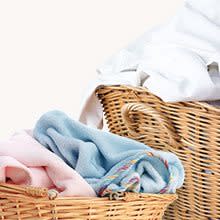
2
Pre-treat
Once you’ve separated the garments, you can start pre-treating the most heavily soiled articles by dabbing some Ariel liquid on the stained area. Before you start placing your load into the washing machine, make sure that you turn the garments inside out, so as to prevent damaging the fabrics.
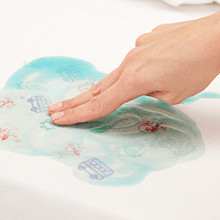
3
Check label
Check the tags on your babies’ clothes to find out in what cycle and on what temperature should they be washed. Most baby clothes are best washed at low temperatures in order to protect the delicate fabric. Make sure that you always follow the instructions on the fabric care label when washing your baby’s garments. Bleach, for example, may ruin your child’s sleepwear, since it is composed of flame resistant fabrics.
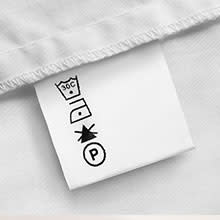
4
Dose
Once you’ve set the right temperature and washer cycle, measure out the correct amount of Ariel Matic Liquid based on the size of the load, and place the dosing cap inside your machine’s drum, on top of the laundry.
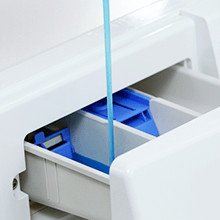
5
Wash
Once done, rinse the clothes once more, to ensure no detergent residue is left on your baby’s clothing.
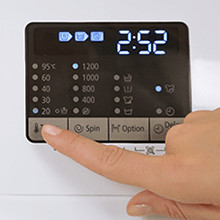
6
Dry
Gently wring the clothes out to remove excess water, then let them drip-dry on a clothes line.
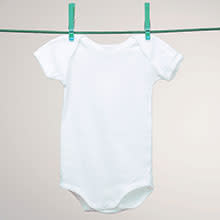
* Number of washes vs. Ariel Matic powder at the recommended dosage for front loading automatic washing machines.
Related articles
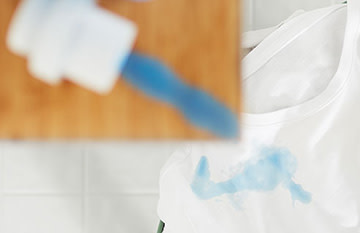
Why choose a liquid detergent
Finding the right detergent for your washer is an important part of the laundry process.

How to store washing detergent
It’s important to store detergents safely and correctly. Find out how to store different detergents, how to keep them out of reach of children, and how to dispose of them safely. Plus, read some tips on how to store your laundry products more easily.

The difference between the types of detergents
When it comes to finding the right washing detergent, it can seem confusing and be difficult to choose the right one. You may not know what the difference is between detergents.

